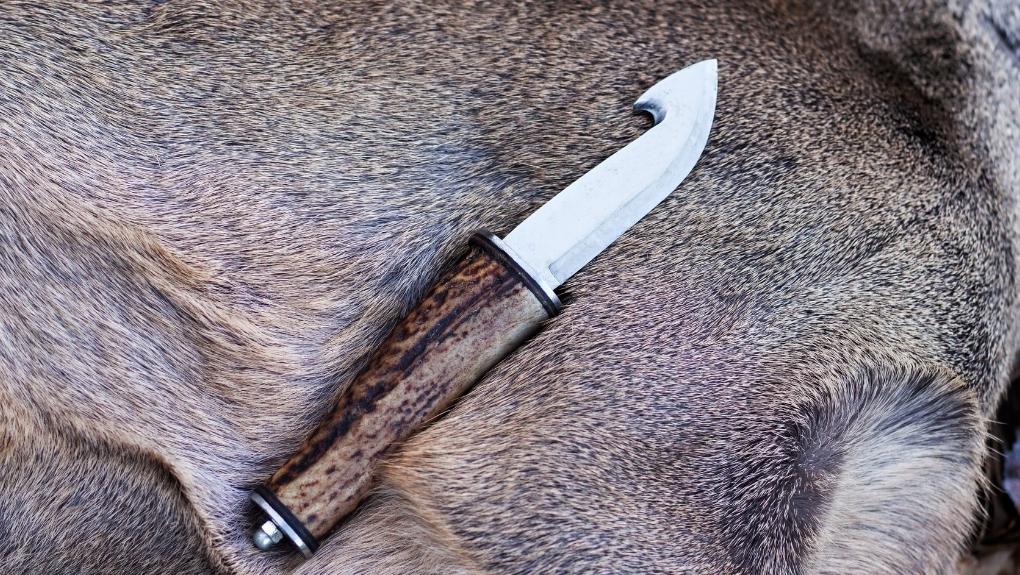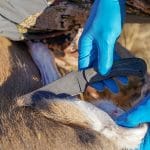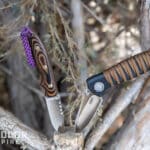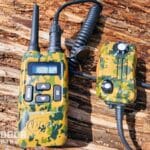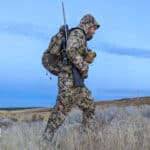Whether you are cleaning an animal, splicing some twine, whittling away in your free time, or chopping up dinner in the backcountry, a good hunting knife is worth its weight.
For many first-time hunters, selecting the right hunting knife can be difficult. With so many “essential features” advertised, it can be challenging to know what you actually need from your blade.
One of the more common questions asked is, “does my hunting knife need to have a gut hook?”
Because most of the tasks required from a hunting knife can be done without a gut hook, it’s not necessary to have one on your hunting knife. In fact, the gut hook can actually get in the way of many tasks, leading to extra cuts and snags. A better option is to have your primary hunting knife without a gut hook. You could then have an additional backup knife with a gut hook for when you successfully harvest an animal.
However, before we dismiss the gut hook entirely, it is an incredibly effective tool and has its place. Just not on your hunting knife.
Let’s dive deeper into what a gut hook is and how you will use it most often.
Check out our YouTube video on the topic!
What is the gut hook on a hunting knife for?
A gut hook is a specialized feature usually on the back of the knife used for opening skin on the belly or abdomen of deer or other big game.
How it works
Earning its name from its hook-like design, you can use the gut hook in the following ways:
- When the deer is hung upside down, an incision running from midway up one of the legs down to the sternum is made with a corresponding incision running from the other leg making a Y-shaped cut down the length of the abdomen.
- An incision is made at the base of the neck and runs down to the back of two legs forming an upside-down Y.
The purpose of a gut hook is to:
- Create a shallow incision on the deer, usually on the abdomen, to peel back the skin without rupturing any internal organs.
- Open the deer’s abdomen up and remove the organs.
However, in the field, you may also use it for additional tasks, such as:
- Cutting strips in cloth
- Marking trees
- Moving meat on the grill (clean it before doing this.)
- Picking up hot cooking pot lids
- Cracking a cold one
Pros of Gut Hooks
Gut hooks are a great, purpose-driven tool to have in the field. Not only do they make skinning a deer vertically easier, but they can be used for many other tasks listed above.
If the deerskin is tensioned from being suspended by its hindquarters or head, a good gut hook cuts through the skin like a hot knife through butter.
Cons of Gut Hooks
Your hunting knife is meant to be a safe blend of blade, tool, and grip. It shouldn’t slip in your grasp when around water or blood or have other snags or points that make it more dangerous to use during camp or field tasks.
When using a gut hook, the face of the primary blade is facing toward you, and when using the main blade, the gut hook is facing you. This isn’t ideal.
The number one rule of knife safety we were taught in Boy Scouts was to never cut toward yourself or others. That rule is broken with the gut hook, which can lead to some pretty serious injuries.
Are gut hooks worth it?
A gut hook is an excellent tool for a singular task. That task is skinning and gutting a deer, not the usual camp or field functions that are often required of a hunting knife.
My recommendation is to have both a good hunting knife and a second knife with a gut hook.
When using a hunting knife, you should be able to apply leverage to the back of the blade without fear of cuts or snags. Think of it as the multi-tool of your setup, capable of doing everything you need, including skinning if required.
The gut hook then becomes something you stow in your pack, on your 4-wheeler, or in your truck for when you emerge victorious from the woods. You can unsheath it, skin and gut your kill and then return it to its sheath after cleaning; a job well done.
FAQs
Do I need a gut hook for deer?
You can gut and skin a deer with most knives that are sharp enough to pierce its hide. That said, a gut hook does make the process easier and the cuts cleaner. I keep mine stored on the 4-wheeler or in my pack until it’s time to use.
Can you use a gut hook for more than cleaning deer?
A gut hook is great for much more than just cleaning a deer. It often is used for cutting twine, small ropes, and even seatbelts in emergencies. I also may have used it to crack a celebratory cold one during skinning.
Should I have a fixed blade or a folding gut hook?
A fixed blade is a better option with a gut hook than a folding gut hook. A folding gut hook means the blade face is in the handle, and the hook is facing outwards when stowed. I owned a folding gut hook for five minutes until it caught the inside of the pocket of my camouflage pants and filleted it open.
Never again.
Can I sharpen my gut hook?
You can sharpen your gut hook, though I have found this much harder than sharpening a regular blade. I recommend seeking out a bladesmith or sending it back to the manufacturer to have it done professionally.

